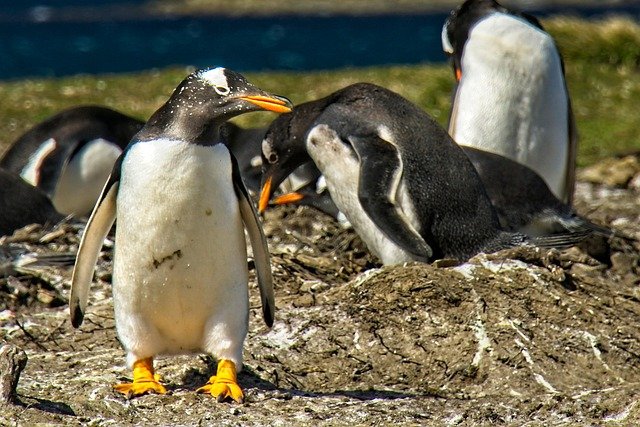**Title: "The Social Lives of Penguins: Understanding Their Complex Communication and Community Structures"** **

The Social Lives of Penguins: Understanding Their Complex Communication and Community Structures
Penguins are not just adorable creatures waddling across icy landscapes; they are also fascinating social animals with intricate communication systems and community structures. In this post, we will delve into the social lives of penguins, exploring how they interact, communicate, and form communities.
Communication: More Than Just a Squawk
Penguins are known for their distinctive vocalizations, which play a crucial role in their social interactions. Each species has its own unique calls, and even individual penguins have specific vocal signatures that help them recognize one another. Here are some key aspects of penguin communication:
1. Vocalizations
- Mating Calls: During the breeding season, male penguins use courtship calls to attract females. These calls can vary significantly between species, showcasing the rich diversity of their vocal repertoire.
- Chick Communication: Parent penguins and their chicks engage in a series of calls that help them locate each other in crowded colonies. Chicks often have a specific call that distinguishes them from others, making it easier for parents to find them.
2. Body Language
In addition to vocalizations, penguins use body language to communicate. For example:
- Posturing: Penguins may puff up their chests or adopt specific stances to assert dominance or display aggression.
- Preening: Mutual preening is a common behavior that strengthens social bonds between penguins, indicating trust and companionship.
Community Structures: A Social Network
Penguins thrive in colonies, which can range from a few dozen to several thousand individuals. These colonies are not just random gatherings; they exhibit complex social structures.
1. Hierarchical Systems
Within penguin colonies, social hierarchies often emerge. Dominance hierarchies can influence access to resources such as food and nesting sites. Higher-ranking individuals may have priority during feeding or mating.
2. Cooperative Breeding
Some species of penguins exhibit cooperative breeding behaviors, where individuals other than the biological parents help care for the chicks. This communal approach enhances the survival rate of the young, as multiple adults can provide protection and food.
3. Social Bonds
Penguins form strong social bonds with their mates and colony members. These relationships are vital for their survival, as they rely on each other for protection against predators and harsh environmental conditions.
Conclusion
The social lives of penguins are a testament to the complexity of animal behavior. Their sophisticated communication systems and community structures highlight the importance of social interactions in their survival and reproductive success. As we continue to study these remarkable birds, we gain a deeper understanding of their social dynamics and the ecological roles they play in their environments.
Whether you're a seasoned researcher or simply an admirer of these charming creatures, the social lives of penguins remind us of the intricate connections that exist in the animal kingdom. Let's continue to observe, learn, and appreciate the rich social tapestry woven by these fascinating birds!
Feel free to share your thoughts or experiences with penguins in the comments below! 🐧

Upvoted! Thank you for supporting witness @jswit.